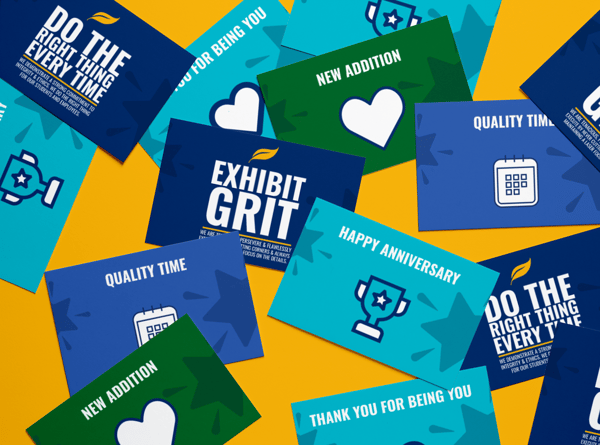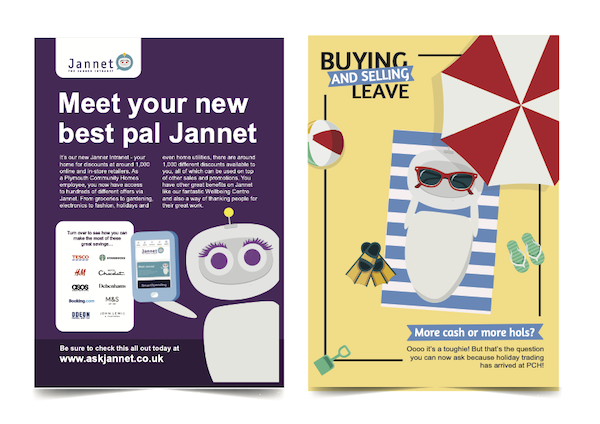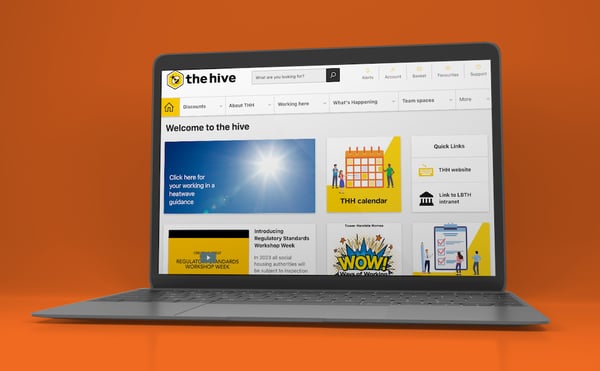Your employees often have amazing ideas. Did you know the Playstation and the Happy Meal came from employees? Unreal, right? So, when you’re thinking about your employee engagement programme, you might want to bring your employees on the journey.
We see that when employees are involved, it helps to generate buy-in and improve the uptake of initiatives, but more importantly, it gives your people a sense of ownership in the programme, which can help take your culture to the next level.
In my experience, the best ideas are often the simplest ones – which is a bonus because they’re also easier to execute. Here are three of my favourite ideas that have proven (time and again) to bring employees on the journey of ongoing engagement:
| 1. Get your people involved in the idea stage |
| 2. Involve employees in the design |
| 3. Let your people launch it |
1. Get your people involved in the idea stage
At the beginning of every programme, there’s an idea stage. You make decisions on what to include, what not to include, what to prioritise, etc. An easy way to get your people involved is to ask for their input. A short, simple employee survey or a focus group that collects the thoughts and opinions of your employees will not only help make a few key decisions easier (validating a few of your own ideas, maybe) but will help your people feel involved, from the very beginning.
This is what Southern New Hampshire University did. They had a huge need for an employee recognition platform to bring together their dispersed workforce and foster a sense of community. SNHU involved employees from the start, gathering a cross-functional team of people who conducted focus groups and interviews to determine what employees thought recognition should look like at the company.
The employee feedback revealed that while recognition was a top priority for employees, many employees felt that recognition was inconsistent, heavily focussed on one-time gifts and limited in its reach as most recognition happened within departments with no crossover.

The team took this feedback and worked to develop a robust recognition programme, dubbed 'Shine,' that features a variety of eCards to celebrate successes and reflect the company's core values. The platform has been a great success, with 85% of employees sending and/or receiving recognition and more than 16,000 eCards sent since since launch. The team also saw a 6+ point increase in their annual employee opinion survey, which shows how the team's diligence and use of employee feedback paid off.
2. Involve employees in the design
A great design can make or break your programme. That’s because if people feel connected to something, they’re more likely to use it. If they don’t, then it could be a wasted exercise. Asking your people to contribute to the design – or key ‘design features’ such as the colour scheme or name - can create a positive association from the start.
Plymouth Community Homes provides a great example of how important platform design can be in driving engagement and programme adoption. Following an intense period of change, a staff survey revealed that half of PCH's workforce felt disconnected from the company and only 38% of employees felt consistently recognised for their work. Further staff feedback revealed that employees had trouble accessing the previous intranet site and weren't engaging with their benefits, so PCH decided it was time for a new platform.
One of the main goals when launching the platform was to connect employees across all departments and support the day-to-day culture that is an essential part of PCH. Tapping into their local roots, the team decided to name the platform 'Jannet,' which plays on 'Janner,' the regional nickname for people from Plymouth and something every employee at PCH could relate to. Jannet has even taken on a life of her own, as the company has used her image in targeted campaigns to get employees excited about using the platform.
Example of promotional materials used by PCH when launching the platform

PCH's culture is embedded throughout the platform, with eCards linking back to organisational values and 'Jannerisms,' and Jannet's image is featured prominently as a reminder that the platform is for the benefit of employees. This strategy has paid off for Plymouth Community Homes, with a 310% increase in communications engagement since launch and 91% of staff saying that PCH is a great place to work.
3. Let your people launch it
Launching an engagement programme is an exciting thing, so creating some excitement around the launch can help you get off to a great start. Creating a ‘launch-plan’ working group of employee champions can drive some enthusiasm towards the launch – and energise your launch campaign with new ideas directly from your people.
Tower Hamlets Homes successfully involved its people at every stage of the process to encourage more ownership and drive platform usage. Because the company was created from a staff transfer, Tower Hamlets Homes lacked a distinct 'THH identity' and culture, so they needed a platform that could connect employees to each other and the business.
The team at THH started with staff workshops to establish areas of improvement and ensure that the platform was meeting employees' needs. THH then created teaser campaigns with branded emails and posters to get employees excited, but they didn't stop there. In order to encourage more ownership, THH identified 'staff champions' who received pre-access to the site so that they could become experts and help other employees post-launch. On the day of launch, experts of 'The Hive' led seminars attended by senior managers to further drive adoption.

The company has seen great success, with 30% of its workforce registered on the platform in only 12 days and 83% registered two years post-launch. The team is continuing to find new ways to drive engagement with the platform and keep employees involved and excited.
Making your employee engagement platform a long-term success starts with employee feedback. Want to learn more about getting started on your own engagement journey? Get in touch with an Employee Engagement Specialist today.

 Emily Christer
Emily Christer





